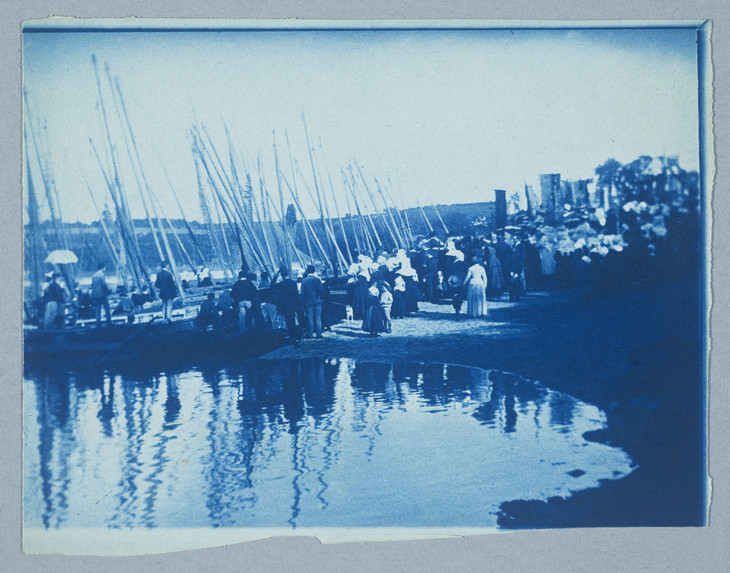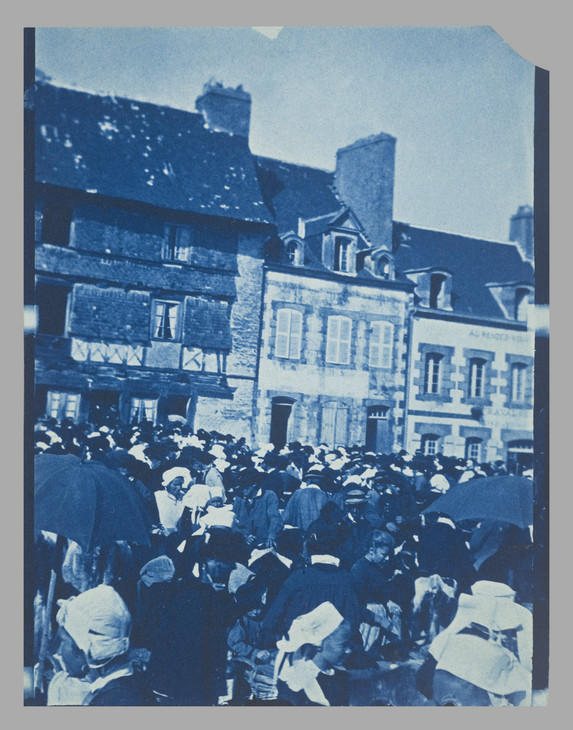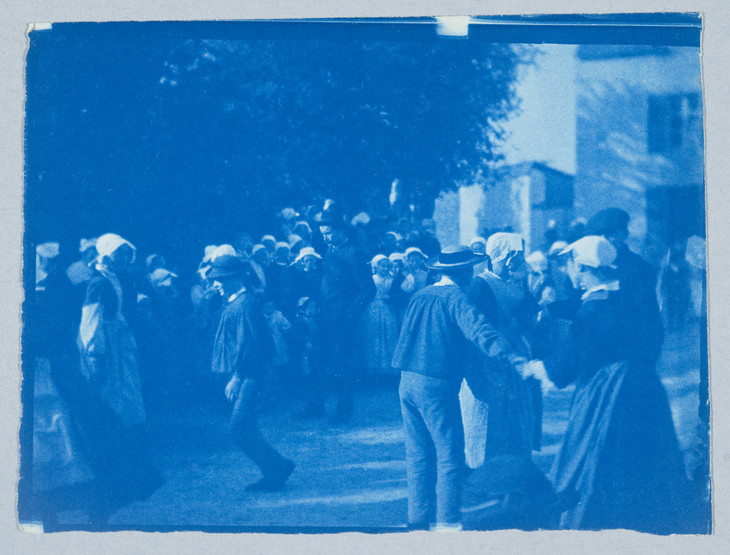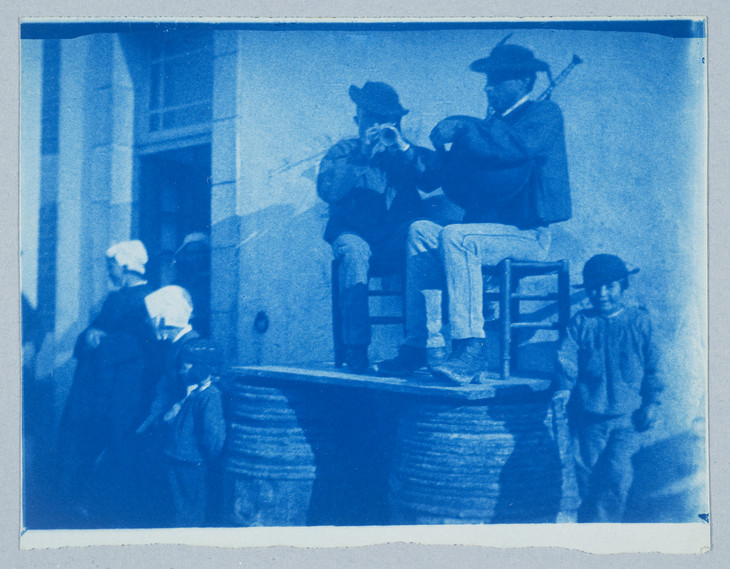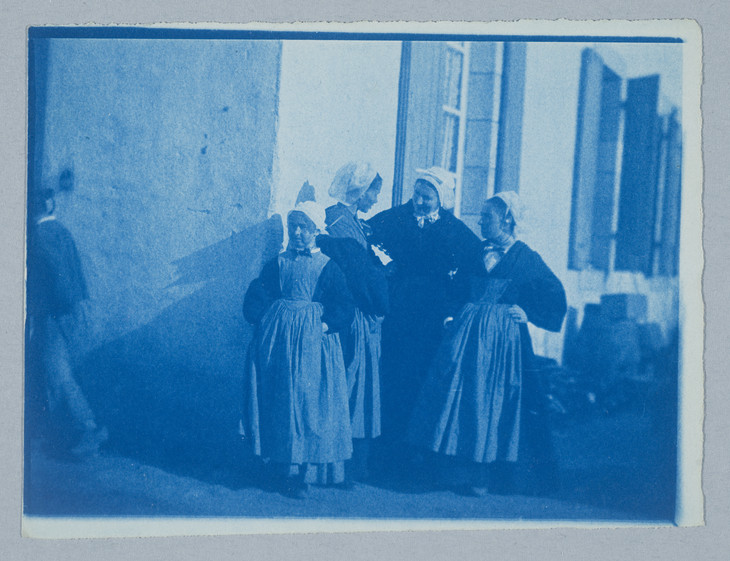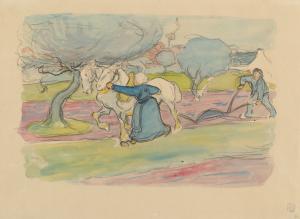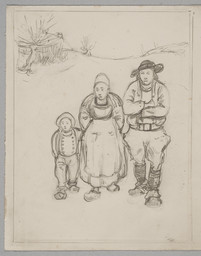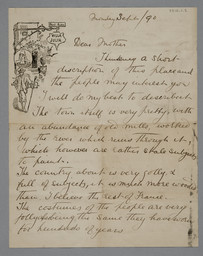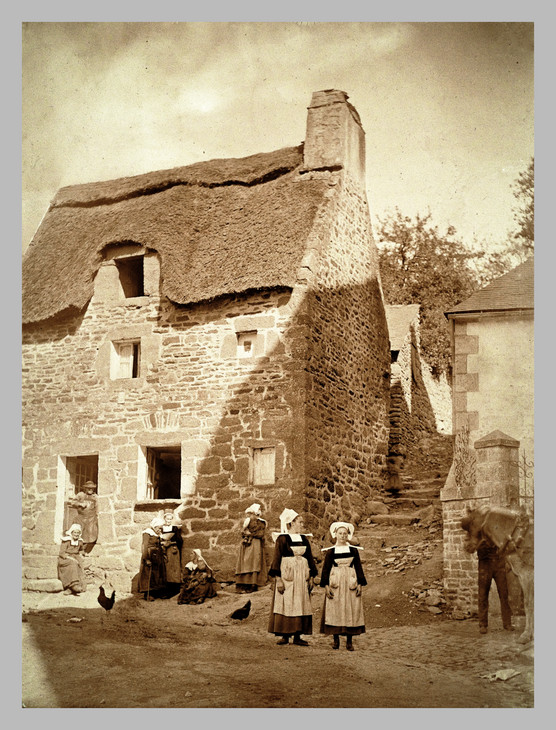
Brittany Scenes c.1890–4
Six cyanotypes and one black and white photograph on paper, possibly taken by Robert Bevan (1865-1925)
Cyanotypes: 113 x 88 mm (or opposite); Black and white photograph: 238 x 174 mm
Tate Archive TGA 9210/5/1
Brittany Scenes c.1890–4
Tate Archive TGA 9210/5/1

Brittany Scenes c.1890–4
Six cyanotypes and one black and white photograph on paper, possibly taken by Robert Bevan (1865-1925)
Cyanotypes: 113 x 88 mm (or opposite); Black and white photograph: 238 x 174 mm
Tate Archive TGA 9210/5/1
Brittany Scenes c.1890–4
Tate Archive TGA 9210/5/1
Robert Bevan visited the artists’ colony in Pont-Aven, Brittany, on two occasions in 1890–1 and 1893–4. He might have purchased these snapshot photographs while there or taken them himself. The photographs show a variety of scenes, including the Breton people in traditional costume and the surrounding area. Bevan has written on the back of several of the photographs and also drawn outlines around some of the figures.
This photograph possibly depicts a Breton religious ceremony, called a ‘Pardon’, about to take place down by the edge of the water, as described in Bevan’s letter to his mother (TGA 9210/1/2).
On the reverse of this photograph it is inscribed ‘Quimperlé’ – a town just east of Pont-Aven – so indicating that this is the area depicted.
In the photograph below four figures – two men and two women – stand holding hands in a circle. On the back of the photograph it is inscribed ‘“Bal à quatre”’, which is the name of a traditional Breton dance.
On the reverse of this photograph the figures of the two men playing instruments are outlined.
On the back of this photograph it is inscribed ‘4 costumes’ and from left to right: ‘Vannes’ on the far right-hand woman; ‘Quimperlé’ on the centre right figure; ‘Nantes’ on the centre left woman; and ‘Pouldu’ on the far left-hand figure, which is also outlined. These names are different places in Brittany and so probably describe the small regional variations in the Breton costume.
How to cite
Helena Bonett, ‘’, August 2011, in Helena Bonett, Ysanne Holt, Jennifer Mundy (eds.), The Camden Town Group in Context, Tate Research Publication, May 2012, https://www

